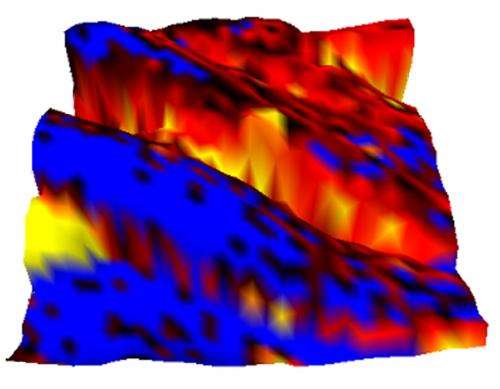High glucose levels could impair ferroelectricity in body's connective tissues

High sugar levels in the body come at a cost to health. New research suggests that more sugar in the body could damage the elastic proteins that help us breathe and pump blood. The findings could have health implications for diabetics, who have high blood-glucose levels.
Researchers at the University of Washington and Boston University have discovered that a certain type of protein found in organs that repeatedly stretch and retract – such as the heart and lungs – is the source for a favorable electrical property that could help build and support healthy connective tissues. But when exposed to sugar, some of the proteins no longer could perform their function, according to findings published April 15 in the journal Physical Review Letters.
The property, called ferroelectricity, is a response to an electric field in which a molecule switches from having a positive to a negative charge. Only recently discovered in animal tissues, researchers have traced this property to elastin and found that when exposed to sugar, the elastin protein sometimes slows or stops its ferroelectric switching. This could lead to the hardening of those tissues and, ultimately, degrade an artery or ligament.
"This finding is important because it tells us the origin of the ferroelectric switching phenomenon and also suggests it's not an isolated occurrence in one type of tissue as we thought," said co-corresponding author Jiangyu Li, a UW associate professor of mechanical engineering. "This could be associated with aging and diabetes, which I think gives more importance to the phenomenon."
About a year ago, Li and collaborators discovered ferroelectric switching in mammalian tissues, a surprising first for the field. Ferroelectricity is common in synthetic materials and is used for displays, memory storage and sensors. Li's research team found that the wall of a pig's aorta, the largest blood vessel carrying blood to the heart, exhibits ferroelectric switching properties.
Li said that discovery left researchers with a lot of questions, including whether this property is found in other soft tissues and the health implications of its presence. Observing differences in ferroelectric behavior at the protein level has helped to answer some of those questions.
The research team separated the aortic tissue into two types of proteins, collagen and elastin. Fibrous collagen is widespread in biological tissues, while elastin has only been found in animals with a backbone. Elastin, as its name suggests, is springy and helps the heart and lungs stretch and contract. Ferroelectric switching gives elastin the flexibility needed to perform repeated pulses as with an artery.
When researchers treated the elastin with sugar, they found that glucose suppressed ferroelectric switching by up to 50 percent. This interaction between sugar and protein mimics a natural process called glycation, in which sugar molecules attach to proteins, degrading their structure and function. Glycation happens naturally when we age and is associated with a number of diseases such as diabetes, high blood pressure and arteriosclerosis, a thickening and hardening of the arteries.
The research team has focused solely on the aortic tissues, but this finding likely applies to other biological tissues that have the protein elastin, such as the lungs and skin.
"I would expect the same phenomena will be observed in those tissues and organs as well," Li said. "It will be more common than what we originally thought."
Researchers next will drill down even more to look at the molecular mechanics of ferroelectric switching and further try to connect the process with disease onset.
Journal information: Physical Review Letters
Provided by University of Washington

















